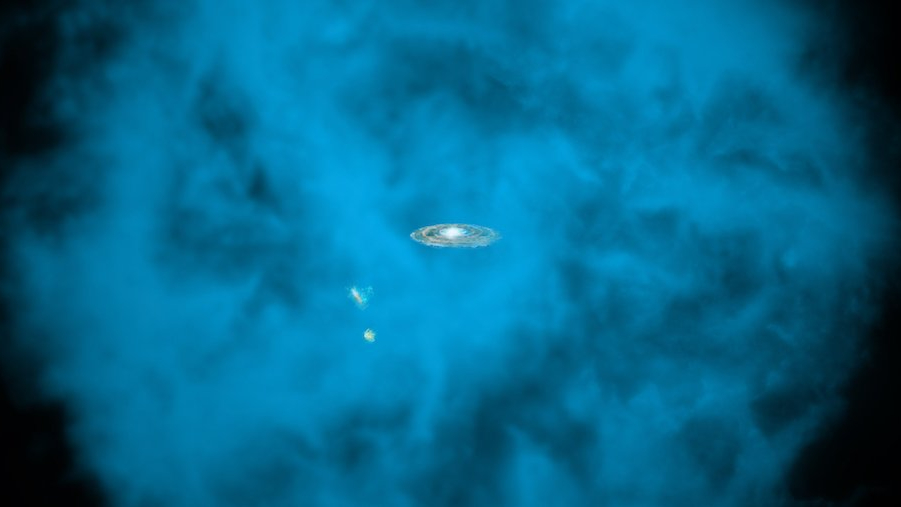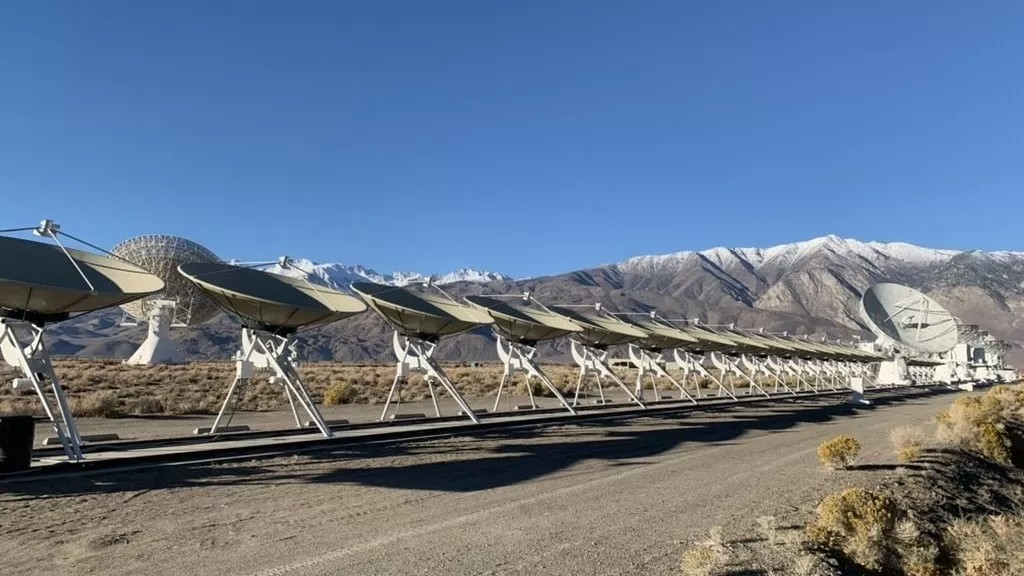Astronomers weighed the Milky Way, and found huge amounts of matter missing
Mysterious fast radio bursts (FRBs) helped astronomers weigh our galaxy, and reveal that some matter is missing.

For over a decade now, so-called fast radio bursts (FRBs) have been puzzling scientists. These ultra-short-lived, bright flashes of radio waves across the sky happen all day, but no one yet knows what causes them.
Although FRBs are still a mystery, new observations of this strange phenomenon may actually help astronomers learn more about our own galactic neighborhood. In new research presented in a press conference at the 241st American Astronomical Society meeting, a team of astronomers from Caltech reported measuring our Milky Way's mass using an FRB — and it turns out our galaxy is lighter than expected.
Caltech astronomers built an observatory called the Deep Synoptic Array (DSA), a collection of 110 radio antennas nestled in the Owens Valley of Central California on the ancestral lands of the Big Pine Paiute Tribe, to make more precise measurements of FRBs.
Related: Weird type of fast radio burst discovered 3 billion light-years away
Their goal is to pinpoint the location on the sky of each FRB they observe, to help figure out where these flashes originate. This task requires highly detailed resolution — the equivalent of spotting a dime on the surface of the moon.
At the same time, the array must survey a large chunk of the sky to have any hope of spotting the extremely short bursts. Surveying a large amount of sky means processing a lot of data, so the array's computers are processing 24 gigabytes per second. This is far beyond the capabilities of most computers we interact with; It would be like streaming 28,000 Netflix movies all at the same time.
In the long run, astronomers hope to build an even more advanced FRB observatory, nicknamed DSA-2000 — yes, that's an array of two thousand radio dishes — in the Nevada desert. But even the initial DSA is a powerful instrument for observing FRBs.
Sign up for the Live Science daily newsletter now
Get the world’s most fascinating discoveries delivered straight to your inbox.
"The DSA is now the world-leading instrument for this purpose," said Vikram Ravi, astronomer at Caltech, at a press conference. In 2022, its first year of operations, alone, DSA-110 helped astronomers discover 30 FRBs with precise locations, more than matching the 21 scientists had previously traced in the years since the first FRB was detected in 2007.
The pinpointing capability is particularly important, Ravi said. "By figuring out what the environments of FRBs are like, we can say something about their origins."

And not only are these observations giving astronomers clues into the mystery of FRBs, they also reveal invisible matter all around us. "As it turns out, more than 80% of baryonic matter — not dark matter, but actually matter like you and me — is invisible in the nearby universe," Ravi said.
This hidden matter is really spread out, making it hard for our telescopes to see. (Dark matter is the mysterious substance that astronomers can't see directly, but have observed through its gravitational signature on galaxies.)
As the radio waves travel from distant galaxies to our antennas on Earth, certain frequencies of the waves will be delayed — an indicator of how much stuff there is between the observer and the FRB. Data from the DSA revealed that our Milky Way has far less regular matter than astronomers expected. Whereas most of the universe is made of around 16% regular matter and 84% dark matter, our Milky Way is less than 10% regular matter and over 90% dark matter, the researchers found.
This unexpected lightness could hint at blowouts in our galaxy's past.
"These results strongly support scenarios predicted by galaxy-formation simulations where feedback processes expel matter from the halos of galaxies," Ravi said in a statement from Caltech. These processes are "fundamental to galaxy formation, whereby matter is funneled in and blown out of galaxies in cycles," he added.
This is only the first year of observations with the newly-christened DSA, which began commissioning in February 2022, and the observatory is still ramping up, with only 63 of the 110 dishes involved in the new research. So there's likely much more to come out of that California valley to help unravel the story of FRBs and more.
The research has also been accepted for publication in The Astrophysical Journal and is available to read on the preprint server arXiv.org.
Originally posted on Space.com.

Briley Lewis (she/her) is a freelance science writer and Ph.D. Candidate/NSF Fellow at the University of California, Los Angeles studying Astronomy & Astrophysics. Follow her on Twitter @briles_34 or visit her website www.briley-lewis.com.










